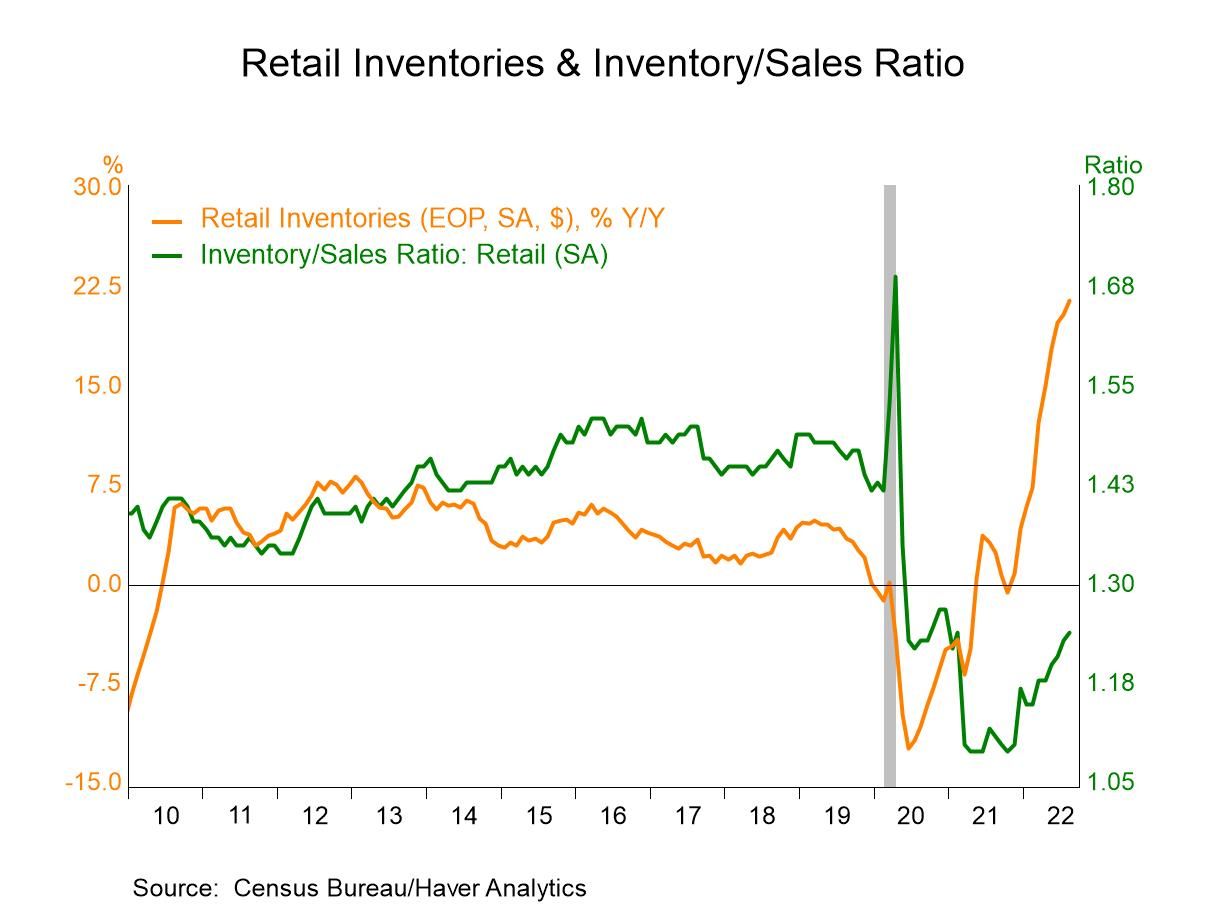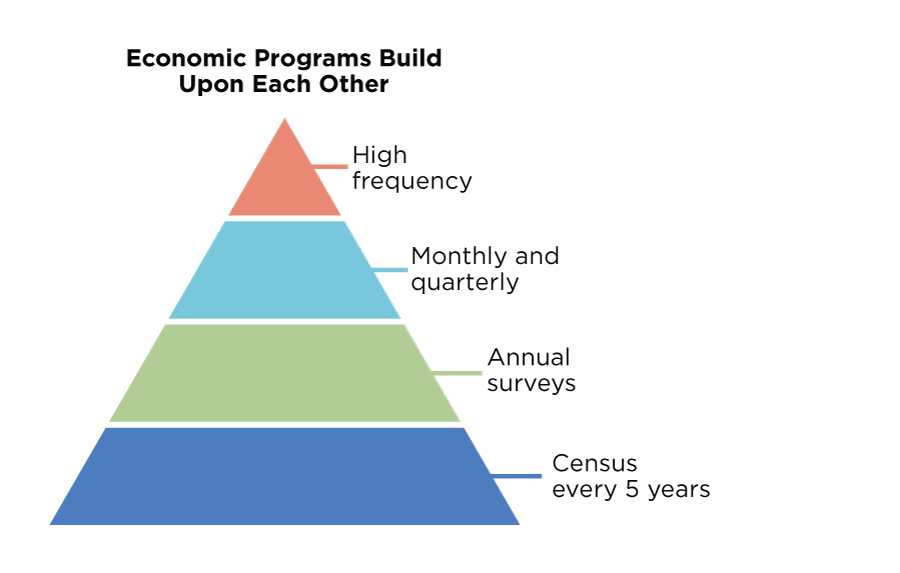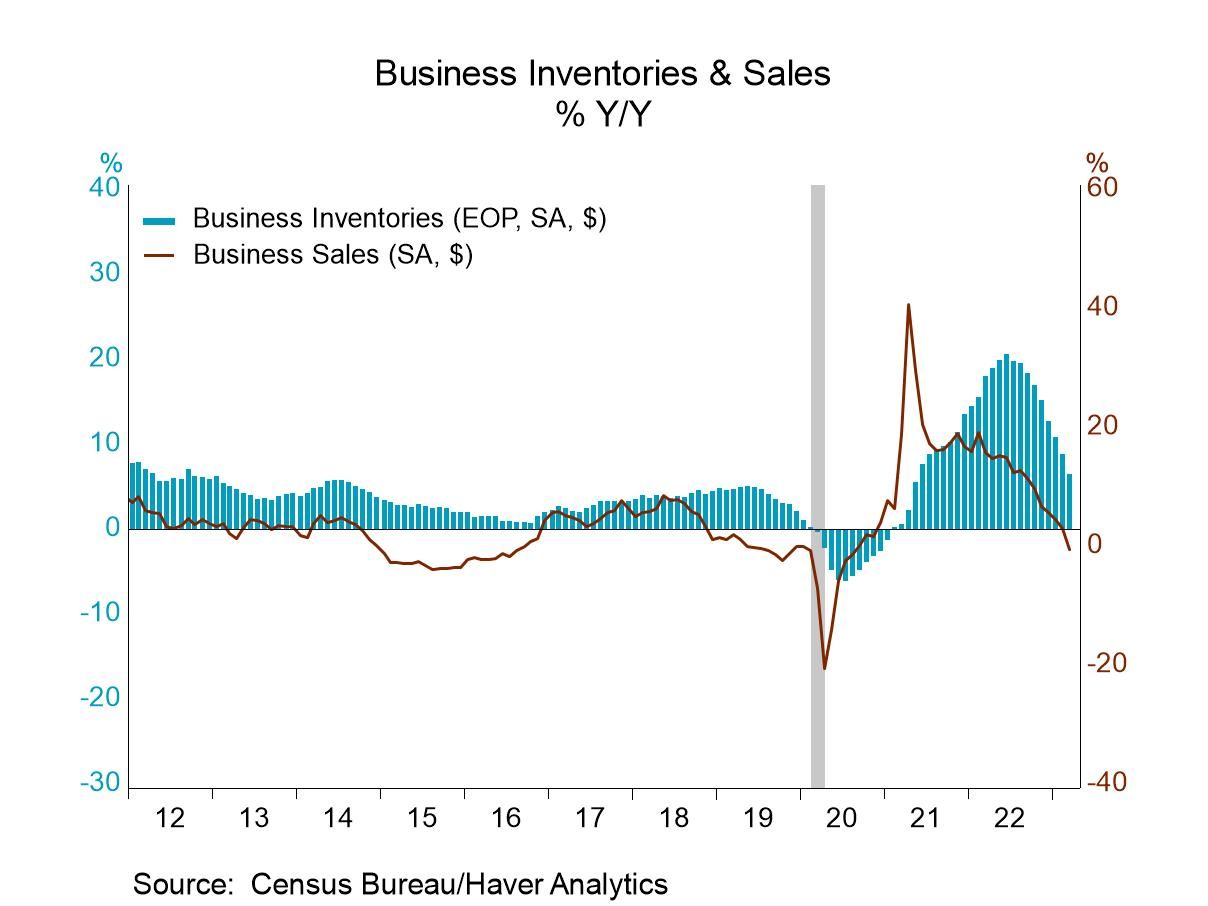business inventories census sets the stage for this enthralling narrative, offering readers a glimpse into a story that is rich in detail with casual formal language style and brimming with originality from the outset.
The business inventories census is an essential process that captures comprehensive data on the inventory levels held by businesses across various industries and locations. It plays a pivotal role in shaping economic policies, assisting business leaders, and providing researchers with valuable information to analyze market trends, supply chain efficiency, and economic health. By collecting and standardizing inventory data, the census helps organizations and governments make informed decisions for growth and stability.
Introduction to Business Inventories Census
Understanding the Business Inventories Census is fundamental for anyone involved in economic analysis or business operations. At its core, a business inventories census is a systematic survey conducted to collect comprehensive data on the inventories held by businesses across multiple industries. This process serves to capture a snapshot of the nation’s inventory stockpiles, which is vital for economic planning, forecasting, and policy-making.
Historically, the practice of collecting business inventory data has evolved alongside the growth of commerce and industrial activity. Early inventory censuses focused on manufacturing and wholesale sectors, primarily in developed economies, to provide governments with essential insights into supply chains and economic health. Over time, these censuses have become a critical tool for understanding economic cycles, identifying potential shortages or surpluses, and tracking productivity.
The main objectives of a business inventories census include quantifying inventory levels, measuring inventory turnover, and supporting informed decision-making. For businesses, participating in such a census can reveal trends, optimize stock management, and benchmark operational efficiency. Policymakers rely on this data to shape fiscal and monetary policy, track economic growth, and respond effectively to changing market conditions.
Purpose and Importance of Business Inventories Census

The business inventories census is more than an accounting exercise—it’s a cornerstone of economic intelligence. By monitoring inventory changes, government agencies can better anticipate shifts in production, distribution, and demand. This data also plays a direct role in calculating key economic indicators like Gross Domestic Product (GDP).
- Enables accurate assessment of supply chain health and bottlenecks.
- Supports economic forecasting and market analysis.
- Guides business investment decisions and resource allocation.
- Informs policy responses during economic downturns or booms.
Scope and Coverage of the Census
The scope of a business inventories census typically extends across both the goods-producing and service sectors, adapting to the structure of each country’s economy. Coverage is carefully determined to ensure data is representative of all major industry groups while accounting for regional diversity.
Types of Businesses and Industries Included, Business inventories census
Most business inventories censuses encompass a broad spectrum of sectors, from traditional manufacturing to modern logistics operations. This inclusivity ensures the census captures an accurate picture of inventory flows throughout an economy.
- Manufacturing firms monitoring raw materials, work-in-progress, and finished goods.
- Wholesale and retail trade businesses tracking merchandise for resale.
- Logistics and warehousing providers holding goods in transit or storage.
- Construction companies managing building supplies and equipment inventory.
- Selected service industries with significant inventory components, such as hospitality or healthcare.
Geographic and Temporal Coverage
A census of this nature is designed to represent the entire country or specific regions, depending on the objectives set by the responsible statistical authority. Most censuses are conducted annually, biannually, or at other regular intervals to ensure consistent, up-to-date data.
- National coverage ensures uniform data collection across all administrative divisions.
- Regional analyses reveal trends and disparities between urban and rural business environments.
- Data is often reported for specific reference dates to maintain consistency and comparability over time.
Data Collection Methods
Collecting inventory data is a complex process that leverages multiple techniques and technologies to maximize accuracy and minimize reporting burden on businesses. Each method has unique benefits and drawbacks, often chosen based on the size and digital maturity of the participating business.
Primary Procedures for Gathering Inventory Data
Inventory data is primarily collected through direct reporting by businesses, using standardized forms or online portals. Data collectors may also supplement these reports with administrative records or on-site verifications to ensure completeness.
Comparison of Manual, Digital, and Automated Inventory Tracking Systems
The transition from traditional to modern inventory tracking has introduced greater efficiency and accuracy in data collection. Below is a comparative table highlighting the characteristics of each approach:
| Method | Advantages | Limitations | Typical Users |
|---|---|---|---|
| Manual Entry (Paper Forms) | Simple setup, low initial cost, suitable for small businesses | High error risk, time-consuming, limited scalability | Small businesses, remote or low-tech operators |
| Digital Spreadsheets | Improved accuracy, easy data sharing, customizable templates | Still requires manual effort, risk of formula errors | Medium-sized businesses, growing enterprises |
| Automated Inventory Management Systems | Real-time data, minimal human error, integration with sales and purchasing | Higher cost, requires technical expertise | Large businesses, tech-driven industries |
Preparation Steps for Data Collection
Effective census participation begins with careful preparation, ensuring that reported data is both accurate and comprehensive.
- Review and update internal inventory records prior to the census reference date.
- Train relevant staff on census procedures and data definitions.
- Set up or verify access to digital reporting platforms, if applicable.
- Designate a point of contact for queries from census administrators.
- Implement internal checks to reconcile and validate inventory figures before submission.
Key Metrics and Data Points
The value of a business inventories census lies in the granular details it collects. Consistency in definitions and reporting practices is essential for meaningful analysis and inter-sector comparisons.
Crucial Data Points Measured
A standardized set of metrics is used to ensure comparability and accuracy across sectors and over time.
- Total value and volume of inventory on hand
- Inventory turnover rates
- Breakdown by inventory type (raw materials, finished goods, etc.)
- Valuation methods used (FIFO, LIFO, weighted average)
- Stock movements (purchases, sales, write-offs)
- Location of inventory (main warehouse, branches, in transit)
- Obsolete or slow-moving stock levels
Reporting Inventory Turnover, Stock Levels, and Valuation Methods
Detailed reporting enables businesses and analysts to assess operational efficiency and market responsiveness. Inventory turnover, for example, is calculated by dividing the cost of goods sold by the average inventory held during a period. Accurate stock levels and standardized valuation approaches are necessary for reliable benchmarking and financial analysis.
Consistent data definitions and transparent reporting standards are crucial for producing census results that stakeholders can trust and act upon.
Reporting and Submission Procedures
The process of submitting inventory data to census authorities is designed to be as straightforward as possible, yet rigorous enough to ensure integrity. Understanding the reporting workflow can help businesses avoid common pitfalls and meet regulatory requirements.
Standard Inventory Data Reporting Process
Once the census period commences, businesses follow a prescribed sequence to compile and submit their data. This usually starts with receiving an official notification and ends with a verification or feedback stage.
- Receive census instructions and reporting forms or digital access credentials.
- Compile required inventory data using internal records and systems.
- Enter data into provided forms, spreadsheets, or online portals.
- Conduct internal review for completeness and accuracy.
- Submit data through designated channels by the specified deadline.
- Respond to follow-up requests for clarification or additional information as needed.
Timelines, Formats, and Submission Channels

Adhering to timelines and formats is essential for successful participation. Most census authorities offer multiple submission channels to accommodate varying business capabilities.
- Standard reporting periods range from several weeks to a few months post-notification.
- Accepted formats include paper forms, Excel templates, or secure online portals.
- Submission channels may include postal mail, email, web uploads, or direct integration with inventory management software.
Best Practices for Accurate and Timely Reporting
Businesses benefit from establishing clear processes and responsibilities for census compliance.
- Maintain up-to-date and well-organized inventory records year-round.
- Designate a responsible person or team for census tasks.
- Schedule reminders for key census deadlines.
- Double-check submissions against internal reports and census instructions.
- Stay informed about updates or changes in census requirements.
Applications and Uses of Census Data
Business inventories census data is a cornerstone resource for a wide array of users. The insights generated inform not only economic policy but also strategic planning at both industry and firm levels.
Stakeholder Utilization of Census Results
Government agencies, researchers, and industry leaders depend on the census for making evidence-based decisions. The data supports everything from economic modeling to targeted interventions in specific sectors.
- Central banks analyze inventory trends to guide monetary policy decisions.
- Industry associations benchmark sector performance and forecast demand.
- Academic researchers study supply chain dynamics and market cycles.
- Business leaders identify opportunities for process improvement and investment.
Examples of Policy and Business Decisions Informed by Census Findings
Below is a table highlighting how census data translates into impactful decisions across different contexts:
| Application Area | End Users | Decision Type | Impact |
|---|---|---|---|
| Economic Policy | Government ministries, central banks | Interest rate adjustments, stimulus planning | Supports economic stabilization and growth |
| Supply Chain Management | Business leaders, logistics managers | Stock replenishment, inventory optimization | Reduces waste, improves service levels |
| Market Research | Consultants, analysts | Trend forecasting, sector comparisons | Drives innovation and competitiveness |
| Investment Decisions | Investors, corporate planners | Capital allocation, M&A activity | Maximizes returns, minimizes risk |
Data Quality, Challenges, and Limitations
Ensuring the reliability of census data is a constant challenge, with multiple factors potentially affecting accuracy. Continuous improvement and proactive issue management are essential for maintaining data integrity.
Common Issues Affecting Data Accuracy and Reliability
Several recurring themes can compromise inventory census results, highlighting the need for vigilance and robust data management systems.
- Incomplete or outdated inventory records at the business level.
- Misunderstandings arising from inconsistent data definitions or reporting standards.
- Technological disparities between participants, leading to data format incompatibility.
- Human error during manual data entry or system migration.
- Delays in reporting due to lack of resources or awareness.
Addressing Discrepancies and Missing Information
Census administrators and participants collaborate to resolve discrepancies through targeted follow-ups, clarification requests, and guidance on proper reporting practices. Automated error-checking tools and validation rules are increasingly employed to flag outliers and missing items for review.
Recent censuses have faced notable challenges such as supply chain disruptions (e.g., during the COVID-19 pandemic), which led to rapidly changing inventory levels and difficulties in obtaining timely, accurate data from affected sectors.
Illustration of a Business Inventories Census Workflow
A clear understanding of the census workflow ensures smoother participation and more reliable results. The following process Artikels the general sequence from initial communication to final data submission.
Sequence of Steps in the Business Inventories Census Workflow
Each stakeholder has defined roles that collectively support the integrity of the census.
- Statistical agency designs census scope, questionnaires, and reporting guidelines.
- Official notifications and instructions are sent to selected businesses.
- Businesses review requirements, update inventory records, and prepare relevant data.
- Designated staff compile and enter data into approved reporting formats.
- Internal checks and reconciliations are performed to validate figures.
- Completed reports are submitted via the specified channels.
- Agency staff review submissions, conduct follow-ups on anomalies, and provide support as needed.
- Final data is aggregated, analyzed, and published for public and policy use.
Recent Trends and Future Developments
The landscape of business inventory census operations is rapidly evolving, driven by technological advancements and changing business realities. These trends promise to make future censuses more accurate, timely, and insightful.
Emerging Technologies Transforming Inventory Data Collection
Innovations such as cloud-based inventory systems, Internet of Things (IoT) devices, and AI-powered analytics are revolutionizing how inventory data is captured and processed. For example, RFID tags now allow businesses to monitor stock movements in real-time, minimizing manual errors and delays.
Impact of Supply Chain Innovations on Census Procedures
Recent global events have accelerated the adoption of flexible and resilient supply chain strategies. Enhanced visibility and integration between suppliers, manufacturers, and distributors mean that inventory data is more accurate and accessible than ever before. This, in turn, improves the timeliness and depth of census outputs.
Ongoing Initiatives to Enhance Census Scope and Accuracy

Statistical agencies worldwide are piloting new approaches to broaden the coverage and ensure high-quality data. For instance, the U.S. Census Bureau has initiated projects integrating administrative data sources and automating data validation, while EU member states are moving towards harmonized digital reporting standards.
- Expansion of census coverage to include e-commerce and micro-enterprises.
- Deployment of machine learning algorithms for anomaly detection in submitted data.
- Development of real-time dashboards for policy and business users.
- Collaboration with industry groups to refine data definitions and reporting practices.
Last Recap
In summary, the business inventories census is more than just a routine data collection—it is a fundamental resource that empowers businesses, policymakers, and researchers to navigate the ever-changing economic landscape. As technology advances and methodologies evolve, the census continues to grow in relevance, offering deeper insights and driving smarter decisions for the future.
Question Bank
Who is required to participate in the business inventories census?
Typically, businesses from various sectors, especially those involved in manufacturing, retail, and wholesale trades, are required to participate according to the guidelines set by regulatory bodies.
How often is the business inventories census conducted?
The frequency varies by region and governing agency, but it is usually conducted annually or every few years to ensure updated and relevant data.
What happens if a business fails to report its inventory data?
Non-compliance can lead to penalties, fines, or follow-up audits, depending on the regulations enforced by the collecting authority.
Is the information submitted in the census confidential?
Yes, the data provided by businesses is generally kept confidential and used only for statistical and analysis purposes, not for individual scrutiny.
How can businesses prepare for participating in the census?
Businesses can prepare by maintaining accurate, up-to-date inventory records, familiarizing themselves with the census requirements, and designating staff to manage the reporting process.
